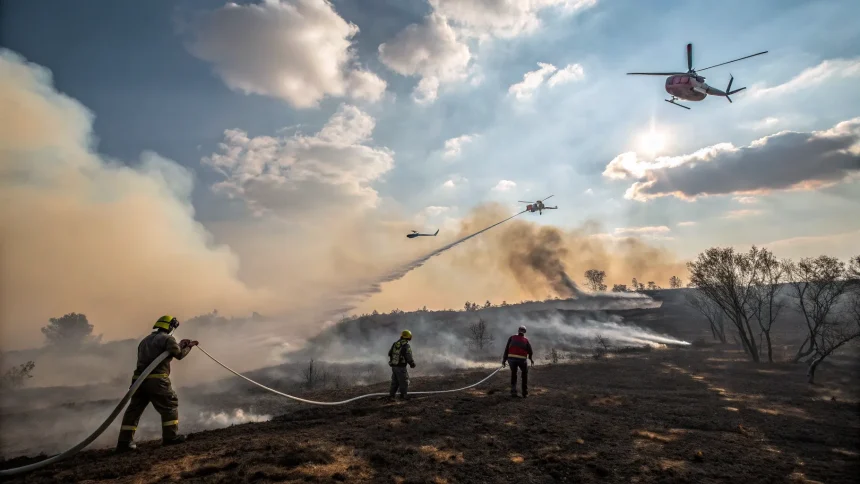Israel’s firefighting service has mobilized a significant force to combat an ongoing wildfire, with 163 ground crews and 12 aircraft currently working to contain the spreading flames.
The large-scale deployment highlights the severity of the fire situation, which has prompted authorities to allocate substantial resources to firefighting efforts. While details about the fire’s location, cause, and extent of damage remain limited, the number of resources committed suggests a serious incident requiring immediate attention.
Aerial and Ground Response
The firefighting operation combines both aerial and ground-based tactics to combat the blaze. The 12 aircraft likely include water-bombing planes and helicopters equipped to drop fire retardant or water on difficult-to-reach areas. These aerial assets provide critical support by attacking the flames from above, especially in rugged terrain where ground access may be limited.
Meanwhile, the 163 ground crews represent the backbone of the firefighting effort. These teams typically consist of trained firefighters equipped with specialized vehicles, tools, and protective gear necessary for direct engagement with the fire front.
Scale of the Response
The size of this response is notable even for a country accustomed to dealing with seasonal wildfires. Israel, with its Mediterranean climate, faces wildfire threats particularly during hot, dry summer months when vegetation becomes highly flammable.
Fire management experts note that deploying such a large contingent of resources indicates either:
- A fire of significant size threatening populated areas or valuable natural resources
- Multiple fire fronts requiring simultaneous attention
- Challenging terrain or weather conditions complicating containment efforts
Regional Context
Israel’s firefighting capabilities have been enhanced in recent years following several major wildfire events. The country has invested in both equipment and training, while also developing mutual aid agreements with neighboring countries and international partners.
The current mobilization demonstrates the implementation of these enhanced capabilities, bringing together a coordinated response of both ground and air resources to address the threat.
Wildfires in the region can spread rapidly due to the combination of dry vegetation, seasonal winds, and hilly terrain. These factors often necessitate swift and substantial response to prevent fires from reaching populated areas or causing environmental damage to protected forests and nature reserves.
Authorities have not yet released information about evacuation orders or the fire’s proximity to residential areas. Updates on containment progress and damage assessments are expected as the situation develops.
The firefighting service continues to focus on containment operations, with the combined air and ground forces working to establish control lines and prevent further spread of the flames.









